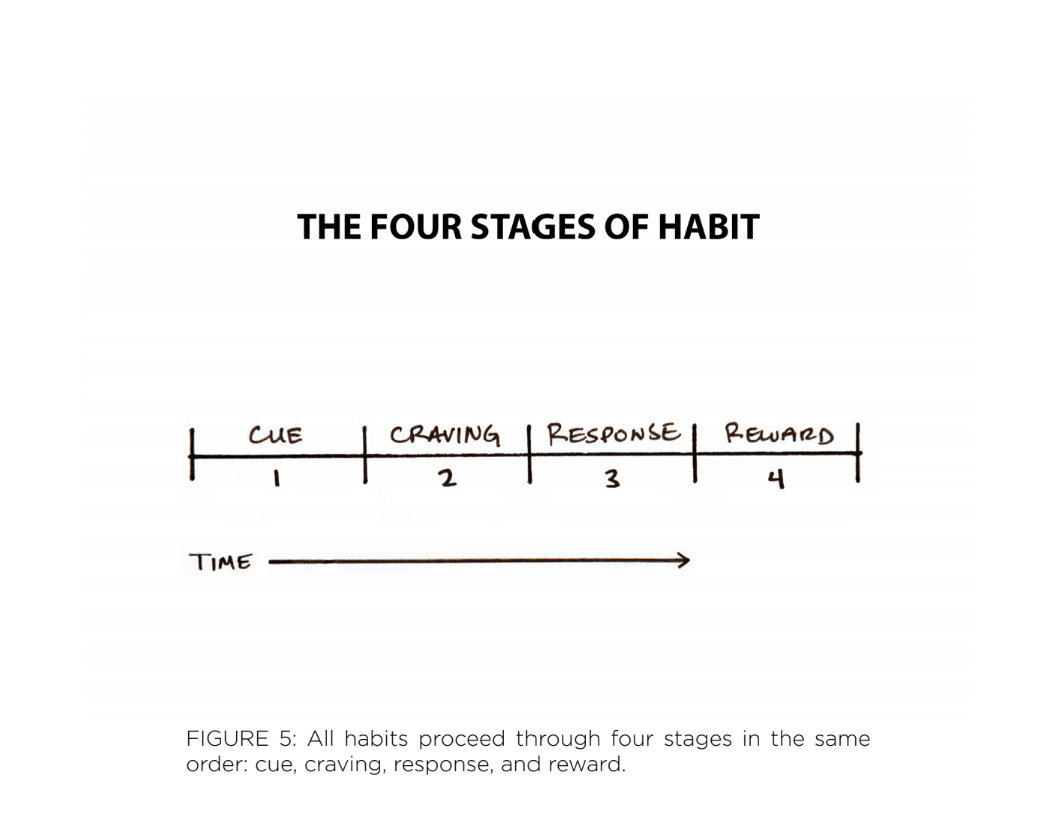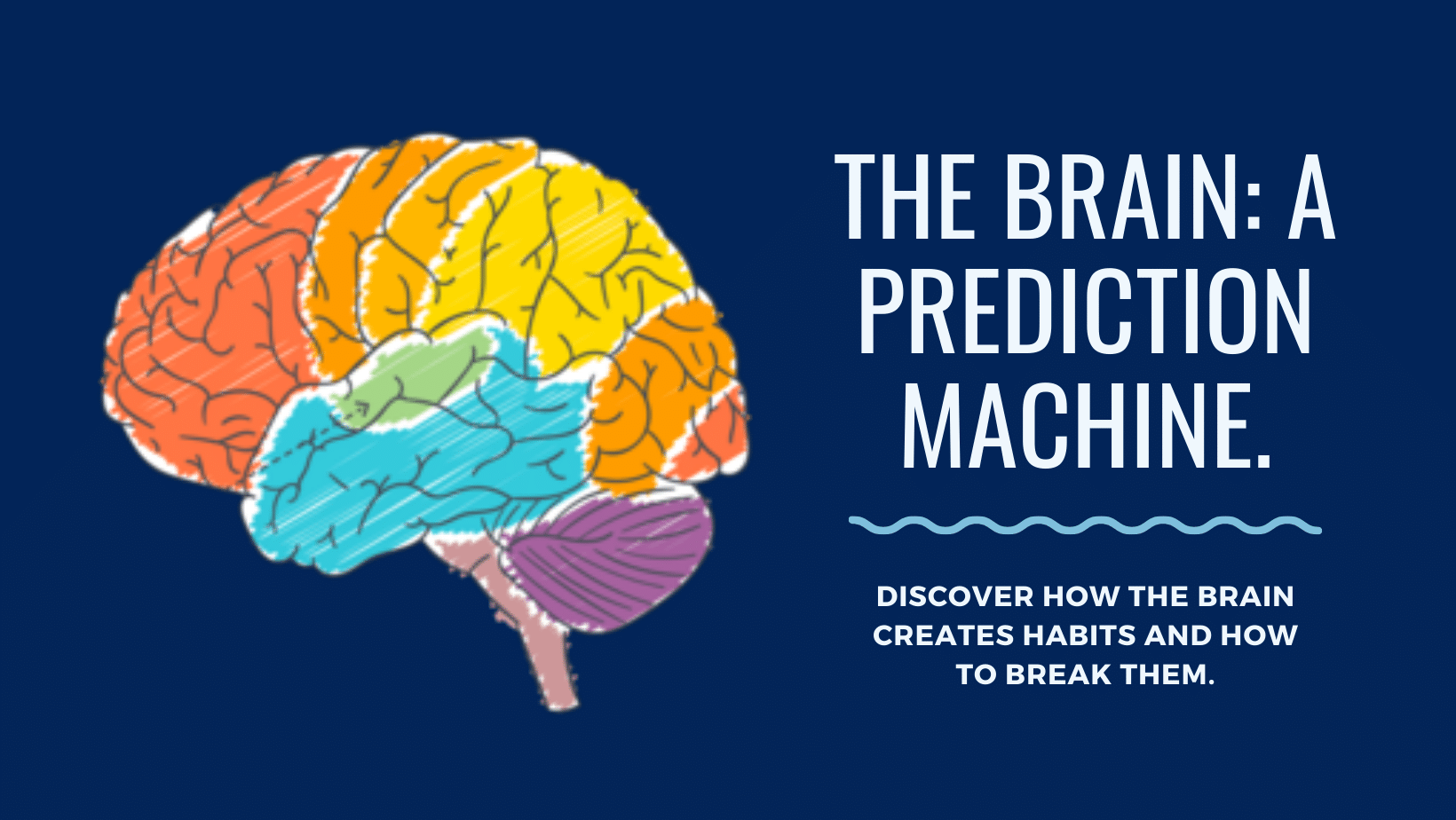Atomic Habits by James Clear explains the compounding impact of minor improvements in our daily habits. The author introduces well-researched concepts explaining the science of habit formation by offering practical strategies for building and maintaining positive habits that last a lifetime. If we stick with such habits for years, they will compound into remarkable results by unlocking maximum potential and delivering personal growth by increasing productivity in various areas of our lives.
Contents:
What are Atomic Habits?
A habit is a routine or behavior that is performed automatically, sometimes without even paying attention. James Clear explains the four-part anatomy of a habit, called the ‘habit-loop’, consisting of – cue, craving, response, and reward as the foundational blocks for developing any good habit or avoiding bad ones. What is an Atomic Habit? They are little habits that are part of a larger system. Just as atoms are building blocks of molecules, atomic habits are the building blocks of remarkable results.
Habits are the compound interest of self-improvement

How to build a habit?
The author prescribes identity-based habits focusing on who we wish to become instead of outcome-based habits, which are unsustainable. He further formulates four laws of behavioral change centred around each component of the habit loop for forming better habits and avoiding bad habits.

The First Law of Behavior Change – ‘Make it obvious’
This law emphasises developing good habits by increasing their visibility. James Clear floats the idea of the brain being a prediction machine (similar to Kahneman’s concept of the brain as “a machine for jumping to conclusions,” which is discussed in How to Take Smart Notes by Sönke Ahrens), which constantly looks out for cues in the subject’s environment. He further highlights how environment design leads to cues that trigger habits, often becoming automatic and subconsciously executed.

Various related strategies like:
- “Pointing and calling”: A safety system practised in Japanese railways that involves verbalising actions to increase environmental awareness and reduce mistakes.
- “Habit Stacking”: Identify a current everyday habit and link a new habit to it for easier adoption.
- “Implementation Intention”: a plan made beforehand about when and where to act, thus implying our intention to implement a particular habit.
Clear suggests making cues for good habits obvious while reducing the environmental visibility of cues triggering bad habits. Thus, instead of relying solely on willpower for success, the author stresses the significance of creating disciplined environments because, once formed, habits are challenging to forget.
The Second Law of Behavior Change – ‘Make it attractive’
This law underscores the necessity of making habits easy to increase the likelihood of their repetition. Clear giving various arguments centred around scientific examples highlights the role of dopamine in forming habits, where the anticipation of a reward instead of the actual reward acts as a key motivator. Strategies like -“Temptation bundling,” which merges an enjoyable activity with a habit, to make the latter more attractive by associating it with the former’s enjoyment. Temptation bundling and habit stacking help align desired habits with rewarding experiences, making them more attractive.
The author further explains the influence of social groups on habit formation, demonstrating how humans replicate the behavior patterns of primarily three groups – ‘the close,’ the many’ in the form of societal/popular norms and ‘the powerful.’ The principle emphasises that habits often cater to ancient human desires and that emotions are vital in perceiving behaviors as attractive or unattractive. Shifting perspectives can transform seemingly burdensome habits into opportunities, illustrating the importance of associating habits with positive feelings for their reinforcement. Conversely, highlighting the drawbacks of negative habits can make them appear less attractive, thereby reducing their occurrence.
The Third Law of Behavior Change: ‘Make it easy’
The Third Law of Behavior Change emphasises the significance of simplicity in habit formation. Clear prescribes action over procrastination and exhaustive planning. He explains how the brain adapts through long-term potentiation, which refers to the strengthening of neural connections with repeated actions. Automaticity – the shift from effortful practice to automatic behavior occurs as habits become ingrained in the subconscious. Thus, consistent repetition solidifies habits by transitioning behaviors from conscious actions to subconscious habits.
Human behavior follows the ‘Law of Least Effort’ – which means people tend to choose the path of least resistance. Therefore, to establish good habits, one should make them as easy as possible while making it difficult to continue bad habits. This highlights the importance of creating an environment supporting desired actions and simplifying decision making. One of the techniques that the author prescribes is the ‘Two-Minute Rule’, which states that any new habit should take less than two minutes to complete. Emphasising the power of automation in shaping our behaviors, the author further suggests using commitment devices to initiate and automate habits, freeing up mental energy for more productive tasks.
The Fourth Law of Behavior Change: ‘Make it satisfying’
The final law emphasises providing immediate rewards that help to satisfy an action. James Clear suggests we must reinforce the behavior through repetition to establish a habit. The reinforcement strategy involves rewarding ourselves immediately after completing the desired behavior to increase the rate of behavior for the future. Tools like habit trackers can be helpful in the reinforcement as they show us the progress we’re making toward our habit-forming goals.
The inversion of this law suggests making bad habits unsatisfying to reduce their repetition, using strategies like – “Habit contracts,” verbal or written agreements stating a commitment to a particular habit and penalty to follow in case of non-compliance, “Accountability partner,” a person acting as a witness to the habit contract. Additionally, he illustrates how laws and regulations function as societal contracts, influencing and shaping collective habits by enforcing certain behaviors.
Conclusion:
Throughout “Atomic Habits,” Clear highlights the importance of environmental factors in triggering habit cues. Each law simultaneously caters to both good and bad habits by prescribing a positive set of actions to be taken for habit building and inversion of the law, catering to avoiding undesirable habits. In prescribing the laws of behavior change, Clear provides an actionable strategy to ensure long-term habit success.

Furthermore, the book tackles many related topics like motivation and debunking willpower-related myths. Clear argues that relying solely on motivation is an unsustainable approach to habit change. Instead, he encourages readers to focus on building systems, environments, and processes that make desired behaviors frictionless and automatic by stacking “odds in favour”.
Many times during the course of the book, the readers might feel that the author has purposely over-simplified the arguments or picked up examples that are convenient to further a point. After halfway through the book, some ideas, like the habit loop, incremental changes, and habit stacking, start to feel repetitive. The 1% better everyday prescription also feels over-simplified; an ideal application of it will transform an individual completely in less than 100 days. However, old habits and changes take time over the years and remain beyond the scope of this simplistic explanation.
In prescribing simplified strategies, the author has either purposefully avoided complex situations like failures and obstacles and how to enforce habits in the face of them or over-simplified solutions.
In summary, “Atomic Habits” challenges conventional wisdom about personal development by highlighting the power of small habits. James Clear presents a practical and evidence-based framework for habit formation, emphasising the compounding impact of consistent, incremental improvements. By interweaving the science of behavior change with actionable strategies and real-life examples, Clear guides readers toward building a foundation of positive habits that can change their lives. Furthermore, upon submitting valid proof of purchase of the Atomic Habits book, James Clear’s official website provides additional resources like the Atomic Habits cheat sheet, various templates, and bonus chapters. For anyone seeking a well-structured guide to habit building, “Atomic Habits” remains a good read.
My Rating:- ★ ★ ★ ★ ★
Goodreads Rating: 4.36
Atomic Habits Book Reviewed On:
- e-book
- Total Pages: 299
- Genre: Non-Fiction/Productivity/Self-Help
- Atomic Habits by James Clear




I find the ‘Make it easy’ principle to be somewhat oversimplified. It’s a bit more complex when it comes to deeply ingrained habits. Would love to see more on overcoming resistance to change.
Hey, got a question. Does ‘Make it attractive’ work for procrastinators like me? Always struggling to start.
Love how ‘Make it satisfying’ wraps up the behavior change laws. It’s crucial for habits to feel rewarding. Will share this with my yoga class!
Interesting read on building habits. It’s a good reminder that behavior change requires a strategy and not just willpower. Thanks for summarizing, Vishal.
Super helpful! ‘Make it attractive’ is something I’ve never considered for habits. Will definitely use this with my kids’ routines too.
Not sure if I agree with ‘Make it easy’ part. Sometimes challenges are what make a habit stick. Too easy and it’s easy to give up too. What do you think, Vishal?
So, if I make it obvious that I want to avoid work, does that count as a good habit? Asking for a friend, lol.
The concept of making habits satisfying to ensure we stick to them is fascinating. It makes complete sense because the reward system really motivates continuation. Good summary!
Sounds all good on paper but wonder if it actually works in real life? Has anyone tried and seen results?
This article on Atomic Habits is just what I needed! Making things obvious and attractive seems like something I can do. Thanks for sharing, gonna try this out!
Heya, was reading through and wondered how long it really takes to form a habit following the ‘Make it easy’ law? I always give up too soon, maybe this could help. Cheers, Veer.